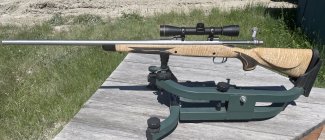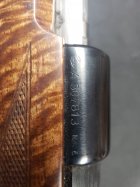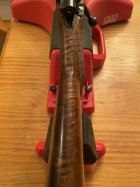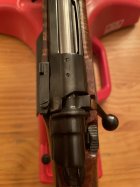You are using an out of date browser. It may not display this or other websites correctly.
You should upgrade or use an alternative browser.
You should upgrade or use an alternative browser.
300 rum into a 416 Remington?
- Thread starter Hntnhrd
- Start date
I asked for some more pictures especially any stamped marks on the receiver. Other FNs should have the stamp on the side of the receiver also shouldn’t they?FN would have a specific logo on bolt handle and made in Belgium .
The bolt stop looks Spanish but the contour on the rear tang looks CZ .
Hard to tell from the pictures . The only one very questionable is the spanish and of course how much was remove from the locking lugs , specifically the lower .
Dusty Stevens
Shiner
Id like to have a 416/375 ultra. That would be a good choice. I have brno and cz safari actions that would run it
You have my attention!! LolId like to have a 416/375 ultra. That would be a good choice. I have brno and cz safari actions that would run it
416 ruger is interesting also.
SBS
Gold $$ Contributor
Like Gmac, I question this being a commercial FN action. I've owned post War FN commercial actions/rifles from just after the WWII until they quit importing them in the late 70's and never saw a serial number such as this. My guess is Zastava -- the bolt sure looks like theirs. Also the t/g ass'y. is one of the Zastava versions, though that could have been swapped out. They made their commercials out of modern steel, just not as nicely finished as the FN's. BTW, post War FN commercials were made of modern steel also, not case hardened simple carbon steel, so both are strong actions. Also, both made actions and rifles to handle the H&H length actions (same as the .416 requires) with no problems I know of. Sako used their actions back in the 50's to build .300 and .375 H&H rifles, and FN made Browning rifles on the FN Mauser actions. I would also question whether the feed rails could be made to work with the .416 Rem. if they have been altered to work with the UM case. Cartridge feed with Mausers (as well as others such as Pre-64 M70, Springfields and P-17 Enfields) have machined feed rails in the action which must be matched to the taper of the cartridge being fed. Once too much is removed, you need a good TIG welder to put the metal back to be machined properly. Also remember that the Mauser has a small recoil lug surface as it was designed for a military rifle that used a steel crossbolt to spread the recoil out across a larger portion of the stock. A crossbolt is a good idea, as well as some hard bedding (I use Devcon) for the larger calibers. Always be sure to relieve the back of the rear tang and have clearance around the back action screw otherwise any movement rearward causes a crack/split in the stock. You see many unbedded Mausers even in non-magnums with such a split behind the tang. Beautiful wood!Here’s what I was sent for markings on the receiver. Other FN markings I have seen have been pretty clear
View attachment 1393600
Last edited:
Thank you for this . I think you are right on the Zastava action. The only thing that throws me off is the serial number style, but I bet it was ground down and restamped. A lot of the older zastavas I looked at online had a wonky series of numbers that wasn’t even.Like Gmac, I question this being a commercial FN action. I've owned post War FN commercial actions/rifles from just after the WWII until they quit importing them in the late 70's and never saw a serial number such as this. My guess is Zastava -- the bolt sure looks like theirs. Also the t/g ass'y. is one of the Zastava versions, though that could have been swapped out. They made their commercials out of modern steel, just not as nicely finished as the FN's. BTW, post War FN commercials were made of modern steel also, not case hardened simple carbon steel, so both are strong actions. Also, both made actions and rifles to handle the H&H length actions (same as the .416 requires) with no problems I know of. Sako used their actions back in the 50's to build .300 and .375 H&H rifles, and FN made Browning rifles on the FN Mauser actions. I would also question whether the feed rails could be made to work with the .416 Rem. if they have been altered to work with the UM case. Cartridge feed with Mausers (as well as others such as Pre-64 M70, Springfields and P-17 Enfields) have machined feed rails in the action which must be matched to the taper of the cartridge being fed. Once too much is removed, you need a good TIG welder to put the metal back to be machined properly. Also remember that the Mauser has a small recoil lug surface as it was designed for a military rifle that used a steel crossbolt to spread the recoil out across a larger portion of the stock. A crossbolt is a good idea, as well as some hard bedding (I use Devcon) for the larger calibers. Always be sure to relieve the back of the rear tang and have clearance around the back action screw otherwise any movement rearward causes a crack/split in the stock. You see many unbedded Mausers even in non-magnums with such a split behind the tang. Beautiful wood!
Gargoyle
Finder Outer
Holy shit!You know I thought about that also. I have posted this in the big caliber forum but my 375h&h has cross boltsView attachment 1393394
It has a "Husqvarna" Ejector box.
SBS
Gold $$ Contributor
It's pure Mauser. The only Husqvarna rifles that have this type are the 94/96 and post-war rifles made on FN actions (the Swedes didn't have actions suitable for the .30-06 and H&H length cartridges at this time). They attempted to conceal the origin of the post-war FN's by grinding off identifying marks that were visible from the outside, but look on bottom flat behind the recoil lug and you'll see the Belgian proof marks. Sako, Colt, Marlin and others also used FN actions for a time after WWII to build rifles.It has a "Husqvarna" Ejector box.
Well since none of you were persuasive enough, I bought the rifle and it’s on its way to Montana. When it gets here I’ll check a few things and take it to Dan Coffin in Victor and see what he thinks we can do. After Dusty’s comment I am looking seriously at the 416/375 rum, or the 416 ruger. It will depend on what was done to the rails I guess. That octagon barrel is kind of growing on me but it doesn’t look like anyone rebores to 416.
Rifle is in my hands now. Wood is as good or better then the pictures showed. But , I still have no idea on caliber. The only extra markings once I got it of the stock are the maker ( GL Lorenzo) and made in Yugoslavia on the left year of the receiver. I’ll include some pictures here. It seems odd that this would be a 300 Remington ultra mag. There’s a metal cross piece behind the front lug and a pillar for the back action screw but not the front.
I did find through google that there is a gunsmith in Modesto CA ( that’s where this gun came from) by G L Lorenzo. It was from an estate so the precious owner will be no help. Would I be out of line to call the maker and ask about it? Especially since there is no caliber marked on the barrel .
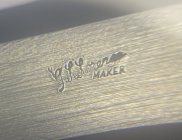
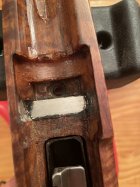
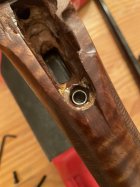

I did find through google that there is a gunsmith in Modesto CA ( that’s where this gun came from) by G L Lorenzo. It was from an estate so the precious owner will be no help. Would I be out of line to call the maker and ask about it? Especially since there is no caliber marked on the barrel .




Attachments
Chamber cast time. What would Yugoslavia mean besides Zastava? Honest question...
Yes zastavia or Mark X before Mark x was a brand .Chamber cast time. What would Yugoslavia mean besides Zastava? Honest question...
Could be a wildcat based on the weatherby 460 case or any of the weatherby cartridges. What made you think 30 rem ultra mag ? A 460 on a mauser is really pushing it , I dont know if itll even fit the 1.10 “ tenon and have enough wall thickness for safety . Could be a 30/338 , 308 norma mag or 300 weatherby .
Ive got a few early weatherby 300s on FN actions . Not much room . P14-17s with the larger tenon were safer .
Ive got a few early weatherby 300s on FN actions . Not much room . P14-17s with the larger tenon were safer .
The sleeve for the back guard screw is std. for a '98. Early attempt at 'pillar bedding', as the front is metal to metal. Cross bolt for a 'heavy hitter'. A peak at the chamber with a light will show if it's chambered for a belted cartridge or not.
Similar threads
- Replies
- 4
- Views
- 1,033
- Replies
- 14
- Views
- 1,163
- Replies
- 1
- Views
- 222
Upgrades & Donations
This Forum's expenses are primarily paid by member contributions. You can upgrade your Forum membership in seconds. Gold and Silver members get unlimited FREE classifieds for one year. Gold members can upload custom avatars.

Click Upgrade Membership Button ABOVE to get Gold or Silver Status.
You can also donate any amount, large or small, with the button below. Include your Forum Name in the PayPal Notes field.
To DONATE by CHECK, or make a recurring donation, CLICK HERE to learn how.

Click Upgrade Membership Button ABOVE to get Gold or Silver Status.
You can also donate any amount, large or small, with the button below. Include your Forum Name in the PayPal Notes field.
To DONATE by CHECK, or make a recurring donation, CLICK HERE to learn how.










